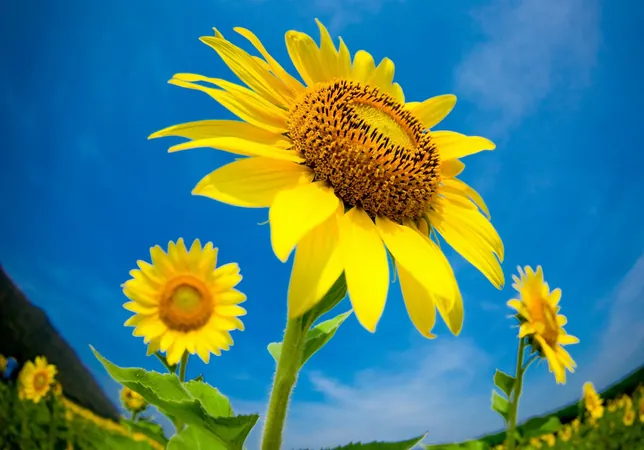
How Climate Change is Disrupting Nature's Clock: The Summer Solstice and Plant Growth
2025-06-11
Author: Jia
A Day of Significance: The Summer Solstice
Every year, the summer solstice signals the longest day in the Northern Hemisphere, inviting warmth, celebrations, and late-night skies. Yet, for plants, this date signifies something far more crucial than just a change in day length.
Nature's Growth Alarm Clock
Recent research from the University of British Columbia uncovers that this annual milestone not only marks summer but serves as a pivotal cue for plant growth and reproduction. However, with the ever-warming planet, this vital signal is becoming unreliable.
The Impact of Rising Temperatures
The study, detailed in the Proceedings of the National Academy of Sciences, demonstrates that while plants have historically relied on the solstice as a green light for growth, they're increasingly confronted with fluctuating temperatures that confuse their natural rhythms.
Dr. Victor Van der Meersch, a postdoctoral researcher, highlights that the solstice could represent an optimal time for plants, but unpredictability in climate could force them to seek new methods of timing their growth.
A New Understanding of Daylength and Growth
Traditionally, scientists believed daylength influenced plant growth. However, this groundbreaking study argues the solstice itself, occurring around June 21, indicates a perfect blend of accumulated warmth and the remaining season for development.
Mapping Growth Peaks Across Climates
The investigation analyzed years of temperature data through 'growing degree days' (GDD), revealing that while the solstice is often an optimal time for growth, local climates present a more intricate picture. For instance, warmer southern regions may see plant growth peak earlier, whereas cooler areas may benefit later in the season.
The Dangers of Misalignment
Mistiming growth can lead to significant risks—crops could bloom too soon, risking frost damage, or pollinators might miss essential blooms. Dr. Elizabeth Wolkovich emphasizes that these timing discrepancies could jeopardize food security and biodiversity.
A Shift in Plant Response Strategies?
Interestingly, the findings suggest that relying solely on fixed signals like the solstice may hinder plants' adaptability to changing environments. Instead, tracking temperature—reflecting real-time conditions—might offer a more effective survival strategy in the face of climate change.
The Call for Future Research
As the world grapples with increasing droughts and shifting climates, understanding how plants adjust their growth timing is crucial. Poor models that ignore these complexities could lead to failed predictions and missed agricultural opportunities.
A New Era of Plant Adaptation?
The study opens up new questions about whether the solstice remains a reliable signal for plant growth or if its correlation with temperature is mere coincidence. Future research will need to untangle the intricate relationship between light and temperature to help ensure the survival of ecosystems in an increasingly unstable climate.



 Brasil (PT)
Brasil (PT)
 Canada (EN)
Canada (EN)
 Chile (ES)
Chile (ES)
 Česko (CS)
Česko (CS)
 대한민국 (KO)
대한민국 (KO)
 España (ES)
España (ES)
 France (FR)
France (FR)
 Hong Kong (EN)
Hong Kong (EN)
 Italia (IT)
Italia (IT)
 日本 (JA)
日本 (JA)
 Magyarország (HU)
Magyarország (HU)
 Norge (NO)
Norge (NO)
 Polska (PL)
Polska (PL)
 Schweiz (DE)
Schweiz (DE)
 Singapore (EN)
Singapore (EN)
 Sverige (SV)
Sverige (SV)
 Suomi (FI)
Suomi (FI)
 Türkiye (TR)
Türkiye (TR)
 الإمارات العربية المتحدة (AR)
الإمارات العربية المتحدة (AR)